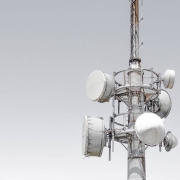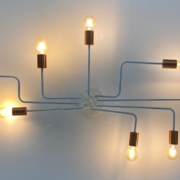I’m sure many of you have noticed the Danish lifestyle trend of hygge, which has slowly crept into our shared consciousness this winter. While there is no direct translation into English, hygge is generally thought to refer to a particular sense of coziness tinged by nostalgia and comfort. Think sheepskin gloves, wood-fires, knitted jumpers, fragrant fresh bread with pumpkin seeds.
Whether or not this appeals to you, the collective public appears to have an insatiable appetite for hygge. Books on the subject fill the non-fiction bestseller lists. Hygge is set to become a staple part of our vocabulary as hygge (pronounced hoo-gah) was shortlisted for ‘word of the year’ by the Oxford English Dictionary. However, don’t be fooled into thinking that hygge is just about material objects. It can also refer to a warm atmosphere and shared friendship between people.
The world of IT and Networks might not be the best at picking up on the latest lifestyle trends, but here at Serviceteam IT we see ourselves as pioneers. As a result, we have curated three simple ways to help you apply the cozy principles of Scandinavian comfort to connectivity infrastructure. Grab a hot chocolate and a wafer, and read about how hygge can benefit your organisation:
1: Connect with others
Like every modern business, you need to be connected to the rest of the world, other employees, suppliers, multiple sites, your cloud, and the Internet. However, many organisations lack the infrastructure in place to make this a reality. They might not even know there are a huge amount of leased line and data options, with capabilities far beyond that of consumer broadband.
Highly connected or distributed organisations require a larger capacity, better latency, and a connection that stays online 99.999% of the time. So why are so many of them settling for less and limiting themselves to connections that aren’t up to the job? This can cause problems, and make you feel like your growth is constrained by technical limitations. If your contract with your current provider is expiring soon, maybe it’s time to reassess your connectivity options and undertake a review of fibre availability for your sites, so you can take advantage of cost-effective and resilient connectivity.
2: Get better at listening
Often your phone system makes it harder rather than easier to put people in touch. Perhaps your customers are presented with a labyrinth of confusing options and voice loops that bring them no closer to where they want to go? Do your staff forward huge email chains to each other when it could all be explained in a few seconds on the phone? Do you know who’s available at what time, and who can take calls if someone is away?
These problems are common and are symptomatic of the first-generation of IP telephony systems which were confounded by poor performance and inflexibility. However, the sacrifices made by the early adopters were not in vain. New IP telephony systems can be much better in terms of cost, call quality, and use the latest technology to make communication a doddle. By designing around the requirements of people, rather than by designing around technological constraints, you can effectively route your calls to the right people, in the right place, making your customers happier, and your staff happier.
3: Find joy in simplicity
Why is technology frustrating? Ever since the Industrial Revolution, technology has promised that it should make our lives easier and simpler. In reality, anyone with a broken computer, missing printer drivers, or someone stuck on hold for 40 minutes, will attest that technology actually makes everything more complicated.
The reason is that technology is often deployed as and when it is needed, without consideration to scalability or the future of the wider IT ecosystem. One area where this often happens is within networking. All too frequently, there are separate connections for your Internet, Cloud, IP Telephony, or any other services that you might require. This disparate collection of connections and networks leads to a large technical and administrative burden being placed on staff. So why aren’t you just using one connection?
This is exactly where a Smart Network excels. By using secure VLANs to split a circuit, all your data streams: voice, video, telephony, point-to-point, internet connectivity, are consolidated into a single connection, meaning you get a flatter, simpler and easier to manage network. A Smart Network also retains the flexibility and extensibility meaning that your infrastructural investment won’t cause you headaches in the future. What’s more hygge than a cozy and simplified network architecture?
If you’d like to benefit from better internet connectivity, communication or continuity, send us a message or contact us on 0121 468 0101.











Leave a Reply
Want to join the discussion?Feel free to contribute!